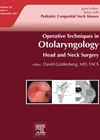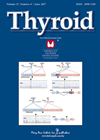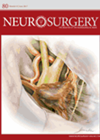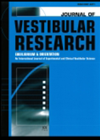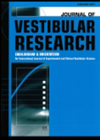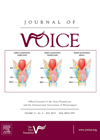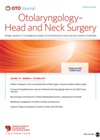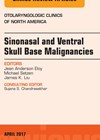
Journal Reviews archive for 2017
Managing the thyroglossal duct cyst
Although the operation to remove thyroglossal cysts and their tracts is commonly performed, a full understanding of the possible anatomical locations of the tracts may be less appreciated. This article helps the reader understand the possible variations available which should...
No increase in papillary thyroid cancer during pregnancy
This small study of 19 pregnant patients, who were diagnosed with papillary thyroid cancer before or during the early stages of pregnancy (up to 20 weeks), assessed the changes of thyroid tumours during pregnancy. Conducted at a single centre over...
What causes delays in head and neck cancer treatment?
This article identifies which factors are responsible for delays in cancer management by a retrospective case-control series study, statistically comparing two groups, each of 50 patients, one receiving timely treatment and the other breaching set targets. It was observed that...
Healthcare economics and device approvals
We use several FDA-approved devices in our clinical practice but are rarely aware about the stringent procedures followed by manufacturers, as well as the FDA, before the devices become commercially available. The authors of this paper undertook a comprehensive review...
Discharge planning
For a specialty such as ENT in which so many procedures are performed as day case surgery, there is a pressing need for objective discharge criteria to facilitate safe decision making post-op. This review strikes a good balance between prescriptive...
Concussion and vestibular processing deficits
It is well known that patients with mild traumatic brain injury (mTBI), also referred to as concussion, display longstanding vestibular symptoms but often clinical signs and objective vestibular function test abnormalities are lacking. The aim of the study was to...
Are vascular loops at the CPA of any clinical significance?
Neurotologists have grappled with this question for many years. The aim of the study was to determine the clinical relationship of vertigo symptoms with vascular loop compression syndrome using 3D T2WI turbo spin echo high-resolution MRI. The study included 417...
Long-term results of injection laryngoplasty with polydimethylsiloxane (Vox) for unilateral vocal fold paralysis
Polydimethylsiloxane (PDMS) is widely used for vocal cord injections to treat patients with a vocal cord palsy. It is commercially available as the Vox implant system. Alternative compounds that can be employed include hyaluronic acid and calcium hydroxyapatite (Radiesse Voice)....
Preoperative planning of the surgical patient
This article covers the need to effectively optimise patient status preoperatively to help maximise postoperative outcomes. The article is well written and emphasises close liaison with anaesthetic colleagues particularly regarding airway assessment and nausea and vomiting. As is becoming common...
Neck dissection in adenoid cystic carcinoma is a risk worth taking?
This paper from Stanford University presents impressive figures to guide the debate on the extent of surgical management in adenoid cystic disease. Adenoid cystic carcinomas present a particular problem in that they can recur even after 20 years. They have...
Objective testing for Eustachian tube dysfunction
Eustachian tube dysfunction (ETD) is typically diagnosed based on subjective symptoms and examination leading to wide variation in its diagnosis and management. The search for an objective test has looked at ways of measuring the passage of air through the...
Robotic surgery for ventral skull base malignancy
The use of transoral robotic surgery (TORS) in the head and neck area has been shown to be a safe and effective technique, achieving good oncological clearance of the oropharynx, hypopharynx, supraglottis and glottic area. However, robotic surgery for the...

